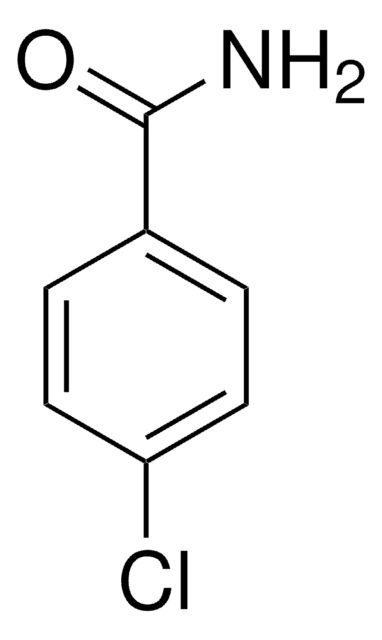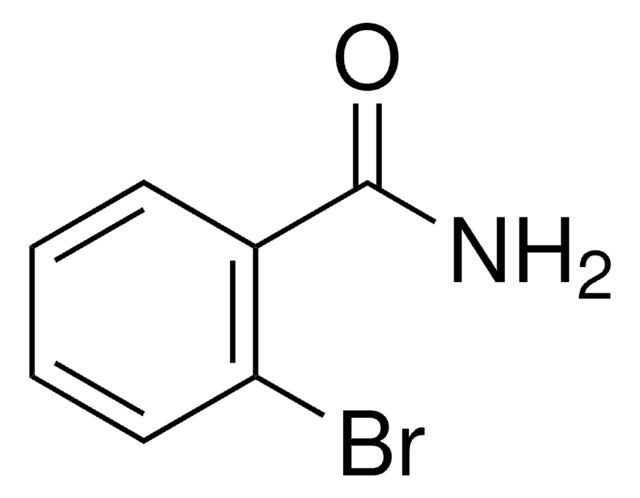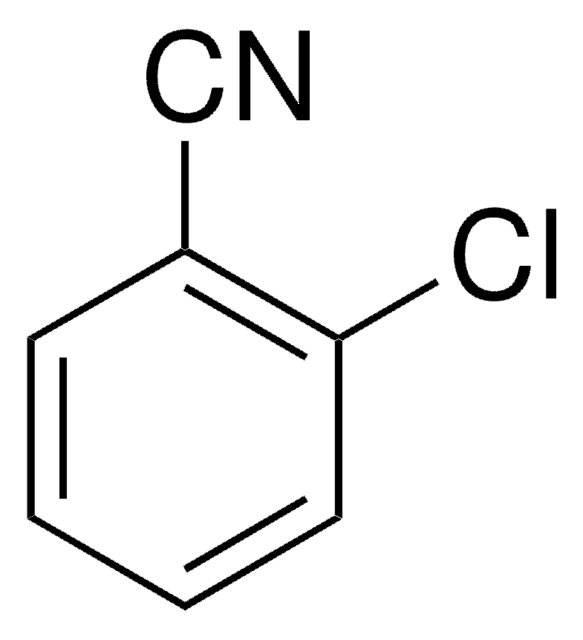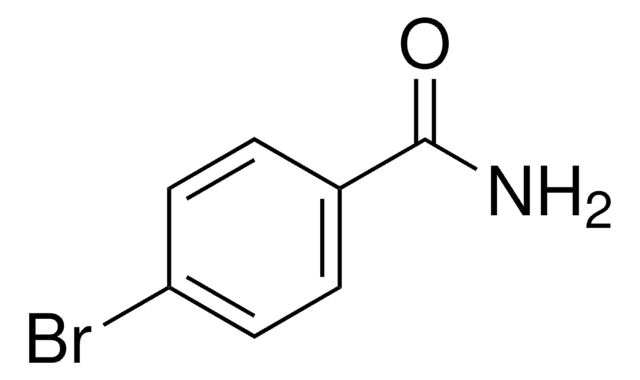All Photos(1)
About This Item
Linear Formula:
ClC6H4CONH2
CAS Number:
Molecular Weight:
155.58
EC Number:
MDL number:
UNSPSC Code:
12352100
PubChem Substance ID:
Recommended Products
assay
98%
form
solid
mp
142-144 °C (lit.)
SMILES string
NC(=O)c1ccccc1Cl
InChI
1S/C7H6ClNO/c8-6-4-2-1-3-5(6)7(9)10/h1-4H,(H2,9,10)
InChI key
RBGDLYUEXLWQBZ-UHFFFAOYSA-N
General description
2-Chlorobenzamide is the major degradation product of CCU (1-(2-chlorobenzoyl)-3-(4-chlorophenyl) urea), a new insect growth regulator. It undergoes room temperature Pd-mediated hydrodehalogenations with KF and polymethylhydrosiloxane (PMHS) to yield benzamide. t undergoes reduction with NaBH4 in diglyme at 162°C to yield 2-chlorobenzonitrile.
signalword
Warning
hcodes
pcodes
Hazard Classifications
Acute Tox. 4 Oral
Storage Class
13 - Non Combustible Solids
wgk_germany
WGK 1
flash_point_f
Not applicable
flash_point_c
Not applicable
ppe
dust mask type N95 (US), Eyeshields, Faceshields, Gloves
Certificates of Analysis (COA)
Search for Certificates of Analysis (COA) by entering the products Lot/Batch Number. Lot and Batch Numbers can be found on a product’s label following the words ‘Lot’ or ‘Batch’.
Already Own This Product?
Find documentation for the products that you have recently purchased in the Document Library.
Mojtaba Mohseni et al.
Optics express, 26(8), 10230-10241 (2018-05-03)
In this manuscript, we present a detailed investigation of the impact of dispersion on the spectral resolution achievable by the application of spectral focusing in coherent Raman imaging. Our results reveal the detrimental effect of third order dispersion that limits
Z Qingxiang et al.
Journal of agricultural and food chemistry, 48(6), 2572-2575 (2000-07-11)
It is reported that 2-chlorobenzamide, one of the chief degradation products of CCU (1-(2-chlorobenzoyl)-3-(4-chlorophenyl) urea), a new insect growth regulator, is a potential carcinogen, but few studies about its environmental stability have been found. This paper is concerned with the
Wenying Lu et al.
Journal of agricultural and food chemistry, 52(26), 7759-7762 (2004-12-23)
1-(2-chlorobenzoyl)-3-(4-chlorophenyl)urea (CCU), a new analogue of diflubenuron and PH-6038, has been widely used in agriculture and forestry as a molt-inhibiting hormone insecticide which was developed in China. 2-Chlorobenzamide, a main degradation product of CCU in the environment, has been identified
Reduction of amides with NaBH4 in diglyme at 162? C.
Zhu H-J, et al.
New. J. Chem., 27(2), 409-413 (2003)
L Guoguang et al.
Journal of agricultural and food chemistry, 49(3), 1304-1308 (2001-04-21)
It has been reported that 1-(2-chlorobenzoyl)-3-(4-chlorophenyl) urea (CCU), an insect growth regulator, has no measurable toxicity to nontarget organisms and is essentially harmless to humans. However, one of its degradation products, 2-chlorobenzamide (CBA), is suspected of being a carcinogen. Therefore
Our team of scientists has experience in all areas of research including Life Science, Material Science, Chemical Synthesis, Chromatography, Analytical and many others.
Contact Technical Service









